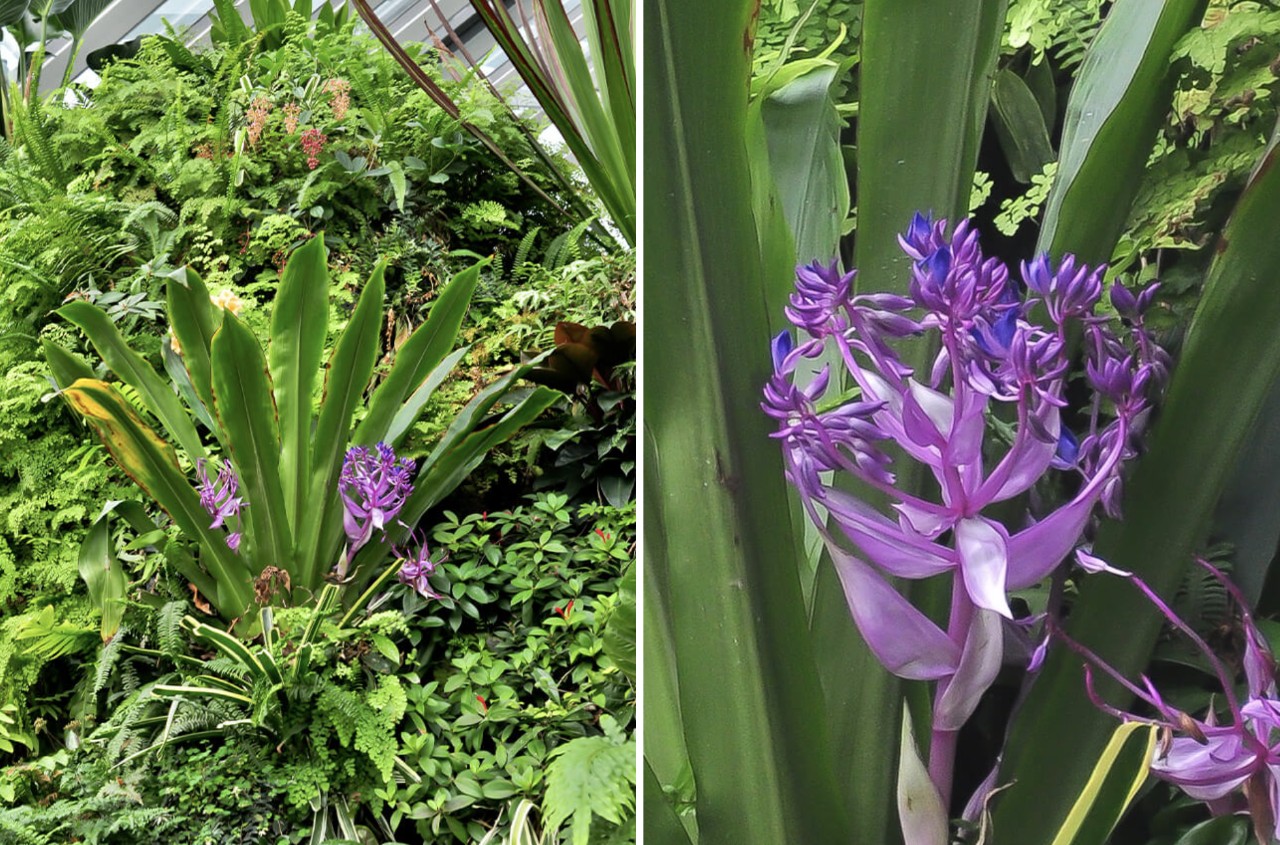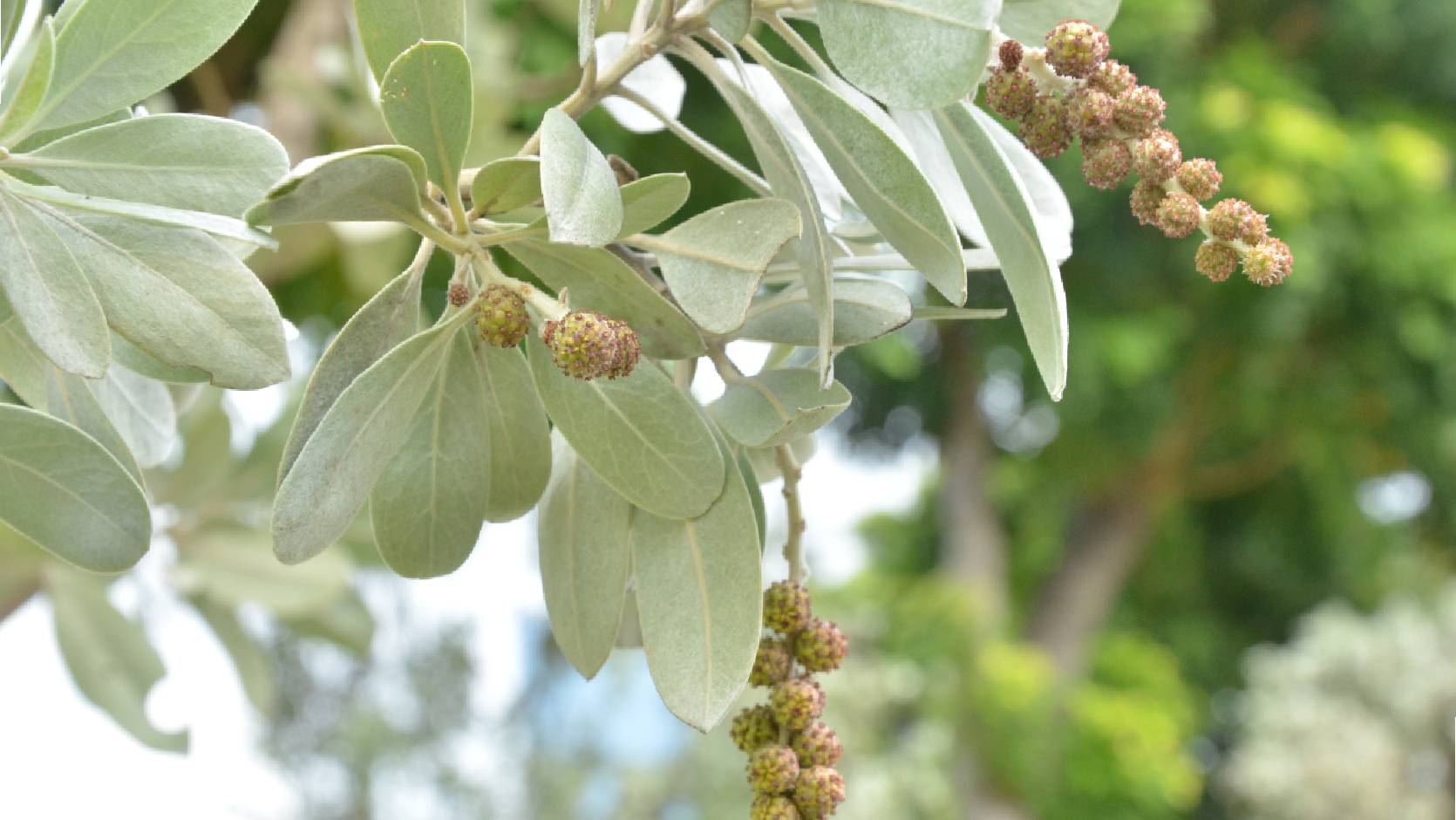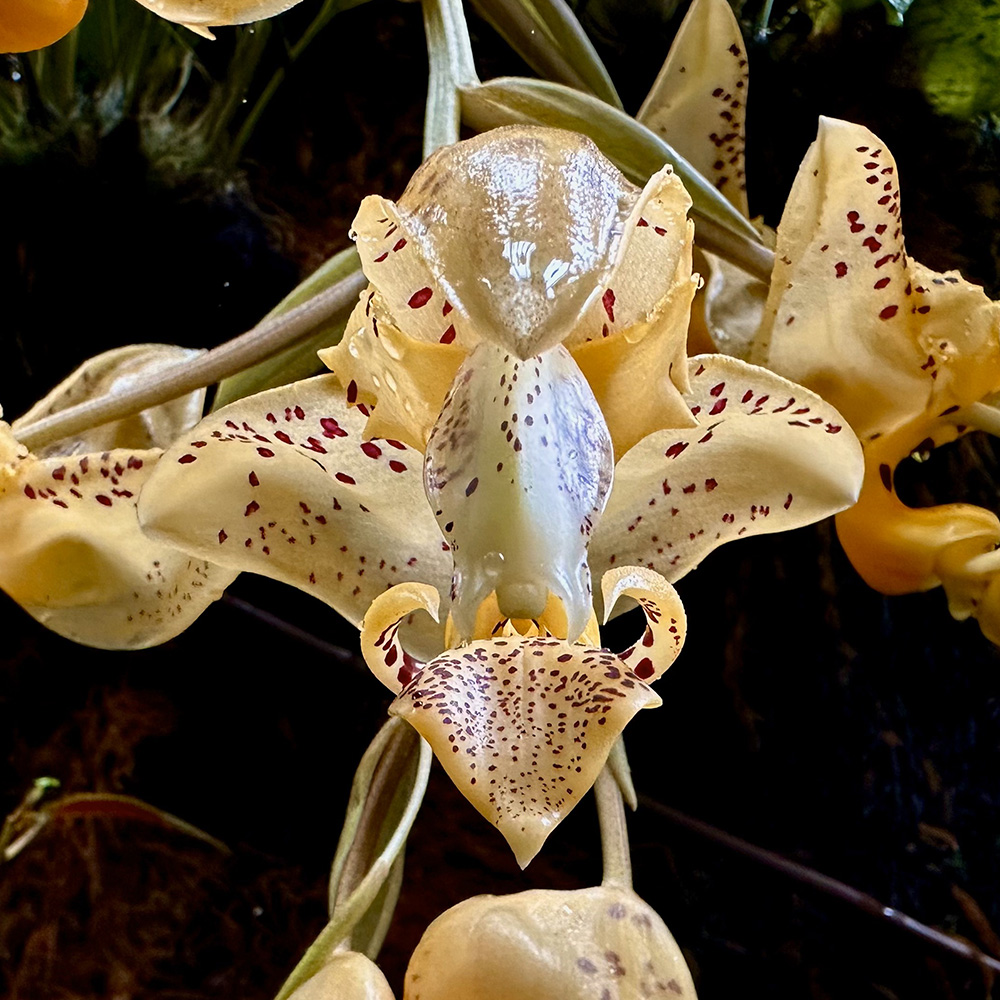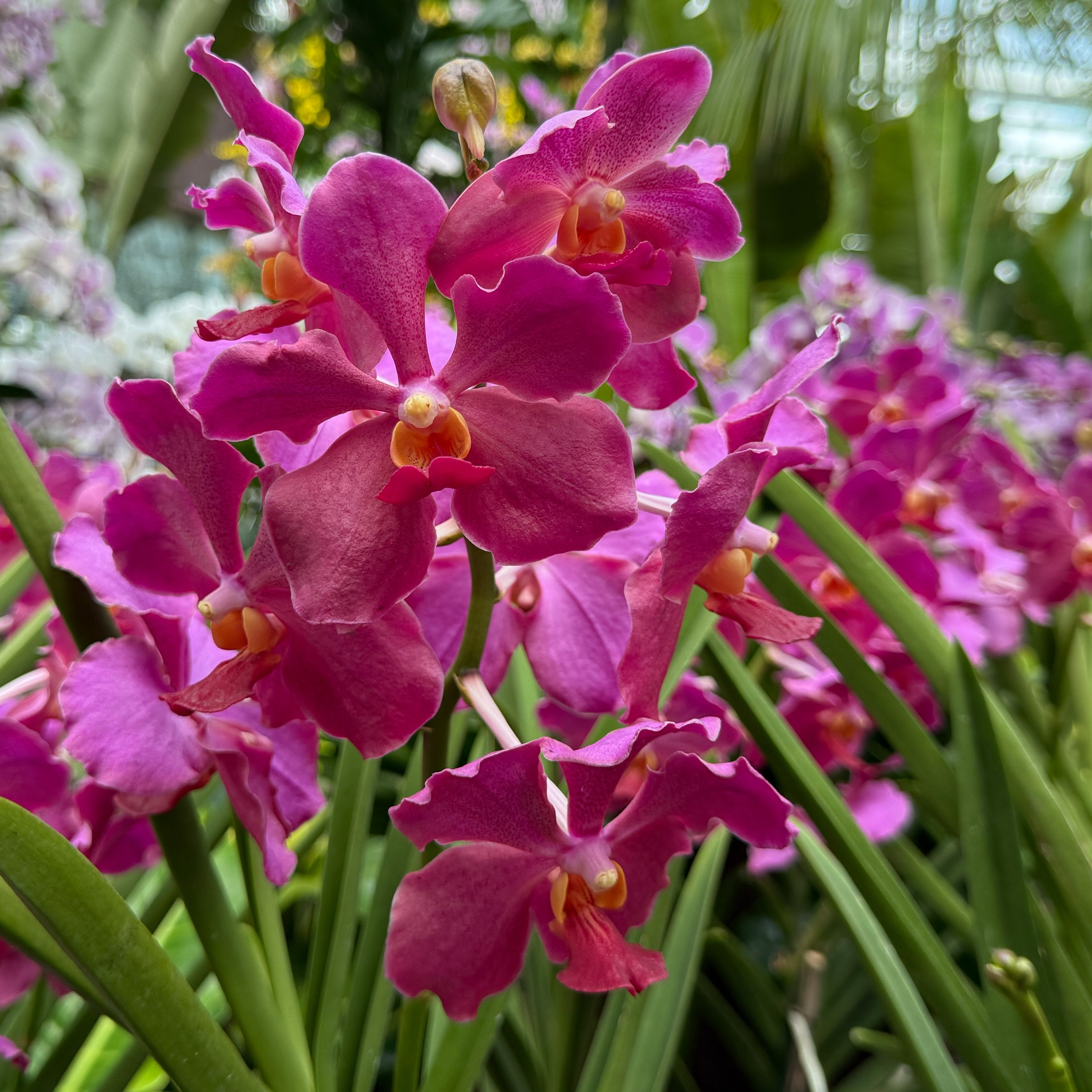Cochliostema odoratissimum
 Cochliostema odoratissimum in bloom on the Cloud Walk of Cloud Forest; R: close-up of the inflorescence.
Cochliostema odoratissimum in bloom on the Cloud Walk of Cloud Forest; R: close-up of the inflorescence.
Cochliostema is a genus of only two species in the Commelinaceae, also commonly known as the spiderwort or dayflower family. This family includes some commonly cultivated landscaping plants, such as Tradescantia spp. and Geogenanthus spp.
The genus name, Cochliostema, is derived from the Greek word ‘cochlion,’ meaning ‘spiral screw,’ and ‘stema’ meaning stamens; alluding to the spiralling male part of the flower characteristic of this genus.
Found growing on trees in the humid cloud forest from Nicaragua to Ecuador, Cochliostema odoratissimum is a unique plant that grows mostly as an epiphyte but can also grow as a terrestrial plant. Mature leaves can be over a meter in length, with the entire plant reaching up to 2 metres in height. The rosette leaflets form a ‘tank’ at the base, collecting water and plant debris, which may eventually be absorbed by the plant for extra nutrients, though this has not yet been proven.
The inflorescences can grow up to 30cm in length, bearing numerous showy flowers, each with three violet-blue petals and three magenta sepals and at the centre of the flower, some bright yellow hairs, possibly to attract pollinators. The petals have frilly hairs and each flower is about 2.5cm in diameter. As the species name ‘odoratissimum’ suggests, the flowers are highly fragrant.
Cochliostema odoratissimum is highly valued in the horticulture trade due to its gorgeous form and marvellous flowers.
Find this impressive species that is currently blooming at the Cloud Walk of Cloud Forest!
Written by: Arthur Voo, Senior Research Executive (Research and Horticulture)
Arthur has been working closely with plants for more than 10 years, whether in a park, nature reserve or glasshouse. These days, if he isn’t taking care of plants in the glasshouses, he likes to spend his time hiking and looking for interesting plants in the wild.



